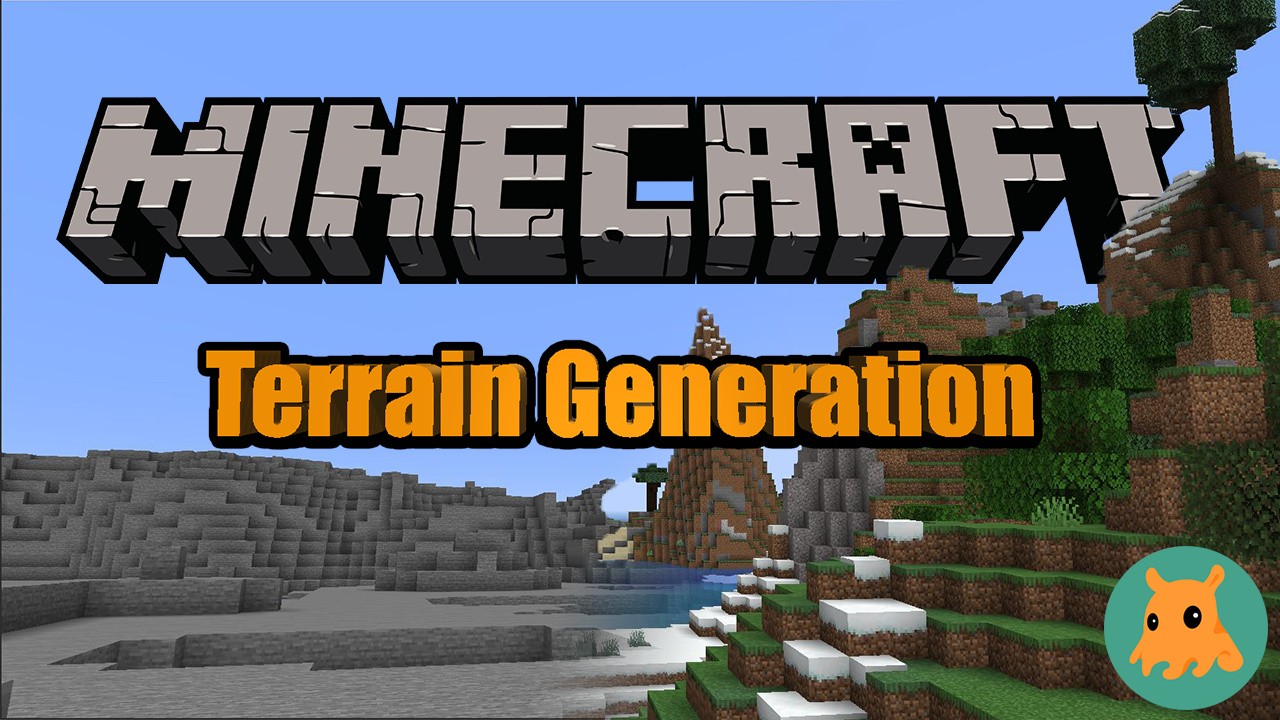Have you ever gazed upon the vast expanse of a Minecraft world and wondered how it all came to be? Those towering mountains, sprawling deserts, and hidden caves weren’t meticulously placed by hand. Instead, Minecraft employs a clever system called procedural generation, which breathes life into these incredible landscapes through a combination of random seeds and noise functions.
This blog post delves into the fascinating process behind Minecraft world creation, inspired by a video exploring this very topic.
Worlds of Infinite Possibility
Imagine a world stretching 30 million blocks in each direction! That’s the incredible scale of a Minecraft world. With countless possible seed values, the potential combinations for unique worlds are practically endless. But how can such a massive and varied landscape be stored and generated so efficiently? Procedural generation holds the answer.
Minecraft doesn’t store the entire world itself; it stores instructions on how to build it. Seeds play a crucial role here. The player chooses a seed, a random 64-bit number that acts like a secret recipe dictating how Minecraft generates the world. Noise functions then take over, using the seed as a base to create order within the randomness. These functions determine various aspects of the world, like the terrain’s height, the placement of different biomes, and even where valuable ores might be found.
Building the World: Chunk by Chunk
Minecraft worlds aren’t generated all at once. Instead, the world unfolds piece by piece, with each chunk (a 16x16x256 block area) receiving meticulous craftmanship. Here’s a glimpse into the stages that bring a single chunk to life:
- Heightmap Generation: The groundwork is laid with a basic structure of stone, water, and air, forming the initial landmasses and oceans.
- Ores Emerge: Different types of stone, dirt, and even precious ores are scattered throughout the generated landscape.
- Surface Takes Shape: Depending on the biome, the top layer is transformed with grass, sand, or other surface materials, giving each area its distinct character.
- Carving the Terrain: Caves, ravines, and canyons are carved out, adding depth and a more natural feel to the world.
- Bringing it to Life: The finishing touches arrive with the placement of trees, villages, animals, and other details that make the world vibrant and full of surprises.
From Ocean to Biome: Assembling the Puzzle
While chunks are the building blocks, the magic truly happens when they come together to form a cohesive world. This world assembly involves multiple layers of generation, with around 40 stages shaping the overall structure. Here are some fascinating highlights from this process:
- The Ocean Canvas: Every Minecraft world starts entirely as ocean. This base layer sets the stage for further world development.
- Land Ahoy!: Layers of noise progressively add landmasses, pushing back the vast ocean and shaping the continents.
- Temperature Matters: Different areas are assigned temperature values, impacting weather, visuals like grass color, and even the type of biome that might appear.
- Finding Your Climate: The world is divided into clusters based on temperature, creating zones for cold, warm, and other climatic conditions.
- Smoothing the Transitions: To avoid abrupt climate shifts, edge smoothing stages create gradual biome transitions between contrasting temperatures.
- Biome Bonanza!: Specific biomes like deserts, plains, or frozen wastelands are assigned within the temperature clusters, giving each area its unique character.
- Nature’s Flair: Variations like hilly landscapes and special biomes are added for further diversity.
- Rivers Run Through It: Though not yet visible, rivers are designated in this stage, waiting to carve their paths through the landscape.
- Shaping the Coasts: Shorelines are defined, and different ocean types (frozen oceans, anyone?) are incorporated.
- The Final Zoom: Biomes are expanded to create a more natural and visually appealing world.
Explore, Discover, Create!
This explanation only scratches the surface of the intricate process behind how Minecraft generates its world. The original video provides a deeper dive with visuals and even more details. By understanding how Minecraft builds its worlds, you gain a new appreciation for the vastness and variety that await exploration. So, the next time you step into a new Minecraft world, remember – it’s not just a random landscape; it’s a carefully crafted masterpiece, born from a seed and brought to life by the magic of procedural generation. Now go forth, explore, discover, and create your own unique adventures in this ever-expanding world!

